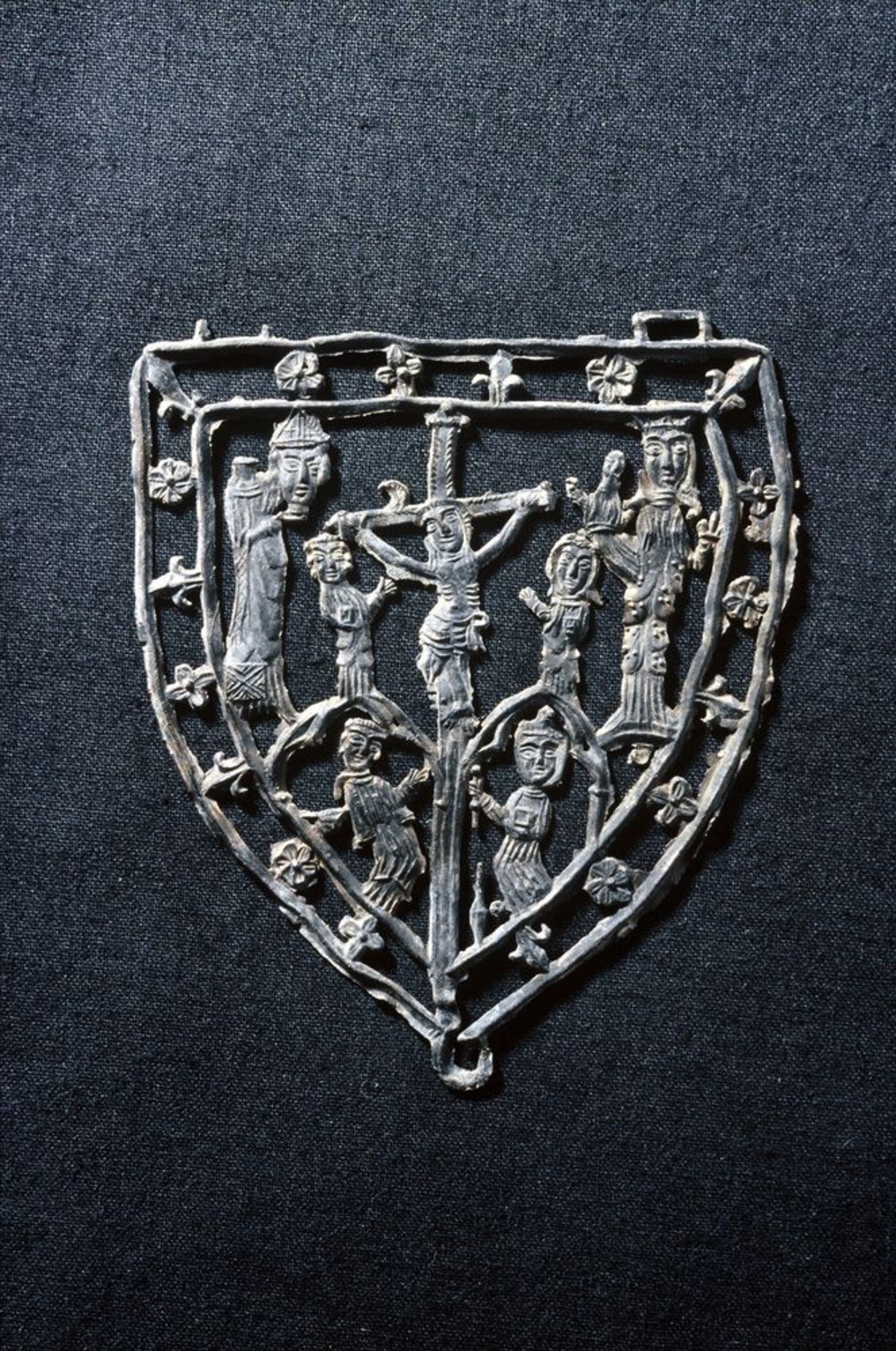- Home
- Men and women
- A pilgrim
- Saint Denis (died circa 250)
- Queen Arnegunde (510/520 – 580/590)
- Hunus the monk (died between 838 and 845)
- Abbot Suger (ca 1081 - 1151)
- Pierre, Eudes and Raoul de Montreuil (died in 1267, 1287, and ca. 1318)
- A pilgrim
- A baker
- A traveller: Arnold Van Buchel, 1585
- An artist : Ponce Jacquio (ca. 1515 – 1570)
A spirit of penitence and a taste for adventure inspired medieval men and women to go on pilgrimages.
The journey to Santiago de Compostela was particularly popular, and the routes that pilgrims took to get to the site in Galicia are well known. When in Compostela, they would purchase the shells of scallops (pecten maximus) from stalls located outside the cathedral. The shells-pierced with holes so that they could be suspended on a wall-were proof that the pilgrimage had been accomplished, and they were conspicuously displayed on the pilgrim's hat, coat or pouch. Such shells are often found in graves; thus, in the Saint-Marcel, cemetery, we find three of them on the body of a pilgrim from the late twelfth or early thirteenth century.
A pilgrim walking barefoot with his shoes hung around his neck, after La Vie de monseigneur saint Denis by the monk Yves, circa 1317.
© BNF, ms fr. 2091, f°1.
A shopkeeper selling pilgrim badges, from the choir stalls of the cathedral at Amiens, early 16th century.
© UASD / E. Jacquot.
Other badges resemble small plates made of a tin-lead alloy, and are usually fitted with fastening holes. They were produced in great number using two-part moulds. At Saint-Denis, nearly all of these types of badges have been found in alluvial deposits of the Croult, the town's river, several segments of which have been excavated. Some have inscriptions or details that allow us to identify the pilgrimage site; these include Saint-Servais in Maastricht, Notre-Dame in Boulogne, Notre-Dame in Rocamadour and Saint-Mathurin in Larchant. For others, identification is often more difficult. This is true of a small spoon (minus its handle) that is decorated with a unique bestiary.
Pilgrim badge in the shape of a spoon, tin-lead alloy.
© UASD / M. Wyss
Pilgrim badge, crucifixion with Saint Denis.
© UASD / J-Ph. Marie.




